As urban environments become increasingly congested and eco-conscious, many commuters are turning to electric transportation for everyday travel. The debate of electric mopeds vs electric scooters is more relevant than ever. While both are efficient and eco-friendly, they serve different purposes and cater to different rider needs. This comprehensive guide will help you understand the key differences, pros and cons, costs, and how to choose the best option for your lifestyle.
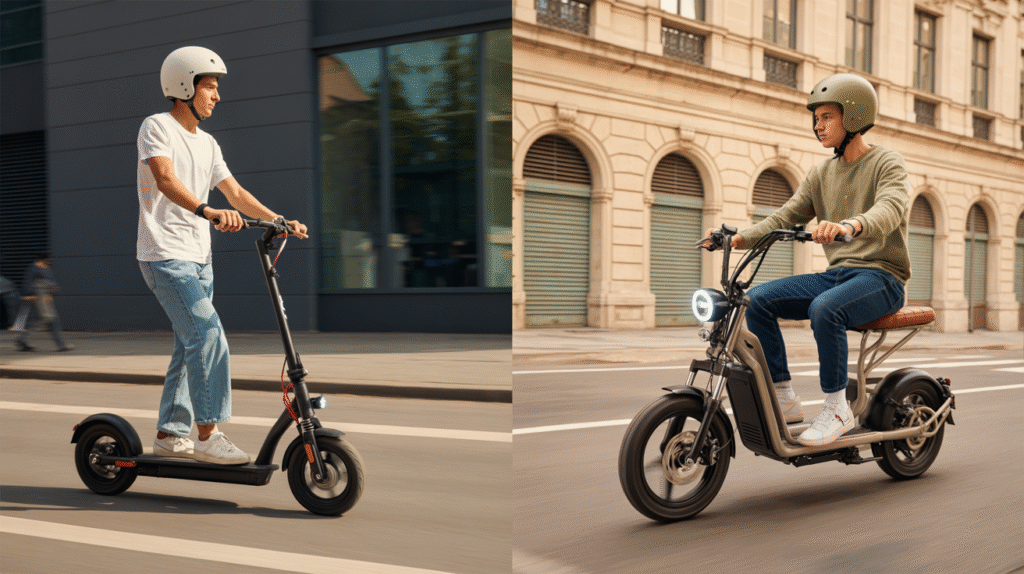
What Are the Biggest Differences Between Electric Mopeds and Electric Scooters?
Though they may look similar at a glance, electric mopeds and scooters differ significantly in design, performance, and legal classification.
Understanding Top Speed and Performance Capabilities
Electric mopeds are typically powered by an electric motor with higher wattage than most scooters. This translates to better acceleration and a top speed that can reach up to 35 miles per hour or more. Electric scooters, on the other hand, usually max out around 15–25 mph, making them better suited for shorter, urban trips.
Design Differences: Two-Wheeled Vehicle Variations
Mopeds resemble motorbikes in their structure, often coming with a seat, mirrors, and lights that allow them to function like a small motorcycle. Scooters, however, feature a more minimalist, upright design with a flat deck and handlebars. Their lightweight and portable nature make them ideal for last-mile commuting or public transport integration.
License Requirements: Do You Need a Motorcycle License?
In many regions, electric mopeds require registration, a valid driver’s license, and sometimes even a motorcycle endorsement, depending on the engine size (commonly referred to as 50cc or equivalent in electric terms). Electric scooters often escape these rules due to their smaller size and lower top speed. Always check local regulations to confirm.
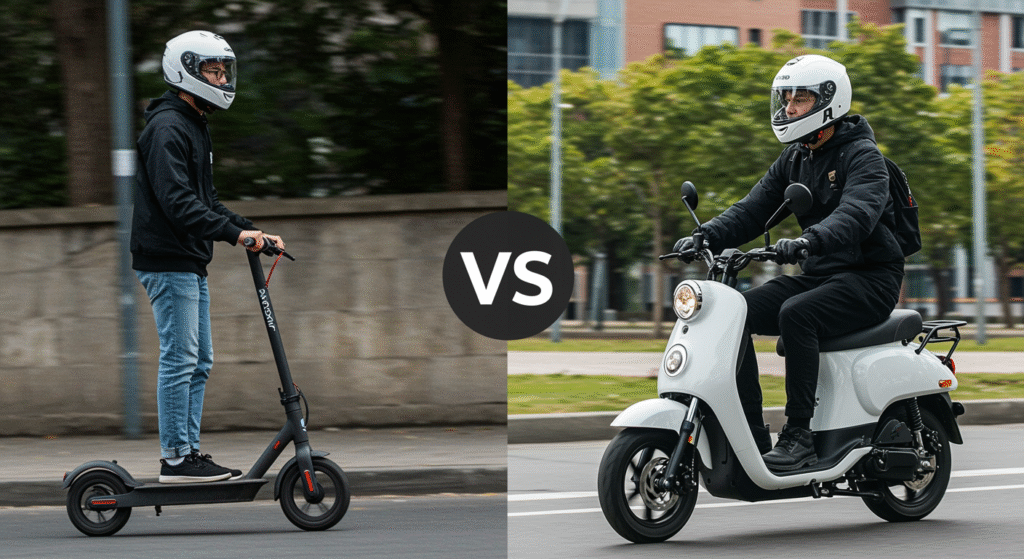
What Are the Benefits of Electric Mopeds vs Electric Scooters for Daily Commute?
Let’s break down the practical benefits each offers to everyday commuters.
Range and Miles Per Charge Comparison
Most electric mopeds offer longer ranges — 35 miles or more on a single charge — due to larger battery capacity. Electric scooters, though improving, typically offer a range of 15–25 miles. For longer distances, mopeds are more reliable, while scooters suit short urban hops.
Comfort for Short-Distance vs Long-Distance Travel
Electric mopeds come with padded seats, suspension systems, and larger wheels that absorb bumps, offering a smoother ride for longer durations. Electric scooters can be less comfortable over time due to the standing posture and limited shock absorption.
Storage Capacity and Practicality as a Commuter Vehicle
Electric mopeds often include under-seat storage, rear racks, or baskets, which can accommodate backpacks, groceries, or a helmet. Scooters generally lack built-in storage, requiring riders to carry items in a bag or backpack, reducing convenience.
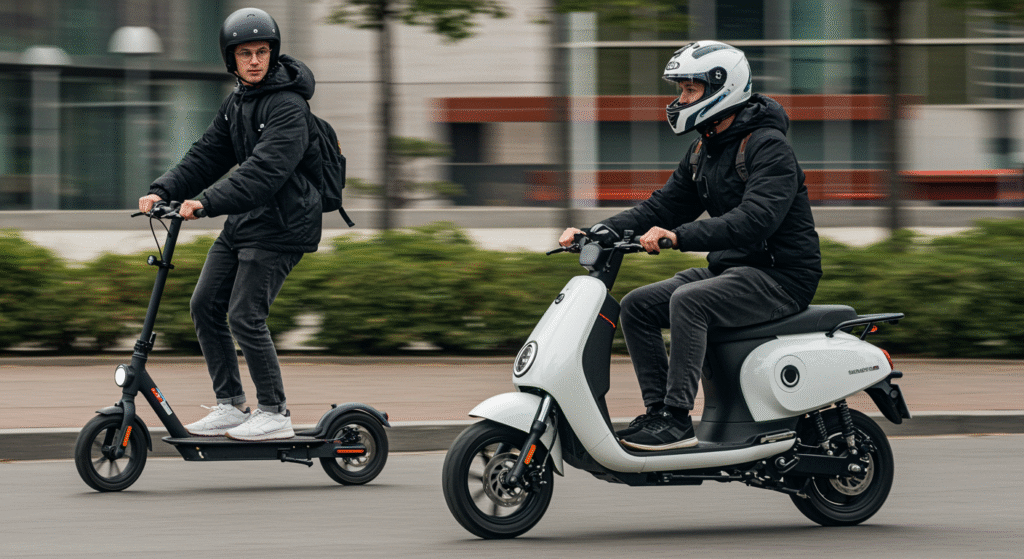
How Do Costs Compare Between E-Scooters and Electric Mopeds?
Initial cost is only part of the story—let’s explore the total cost of ownership.
Initial Cost of an Electric Moped vs E-Scooter
Electric scooters are generally more affordable, with models ranging from $300 to $1,500. Electric mopeds typically start around $1,000 and can exceed $3,000 depending on battery size and features.
Maintenance Expenses and Battery Replacement
Electric mopeds have more complex components (brakes, lights, controllers), which can result in slightly higher maintenance costs. However, both require regular checks of tire pressure, battery health, and brake pads. Battery replacement is a shared expense, with higher-capacity batteries for mopeds being more costly.
Long-Term Savings vs Petrol Alternatives
Compared to gasoline-powered vehicles, both mopeds and scooters offer impressive savings. You’ll avoid fuel expenses and reduce reliance on public transport. Over time, the eco-friendly nature and low operating cost of electric vehicles (EVs) like these contribute to significant long-term savings.
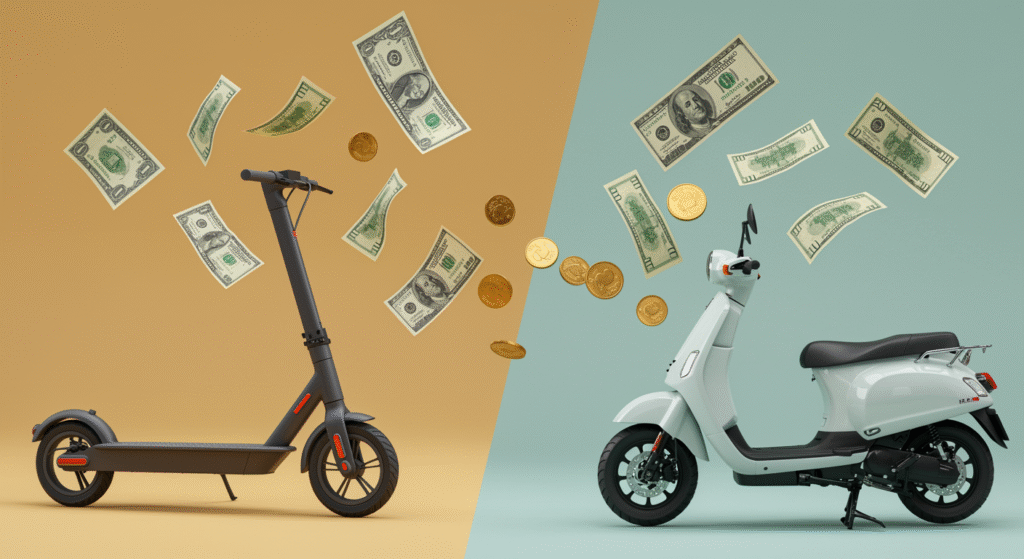
What Are the Pros and Cons of Electric Mopeds?
Let’s take a closer look at what makes electric mopeds stand out — and where they fall short.
Higher Top Speed and Better Acceleration Benefits
For those who commute on city streets or require higher speeds to keep up with traffic, mopeds shine. Their motors allow for swift acceleration, often outperforming e-scooters on open roads.
Comfort Features Similar to Modern Mopeds
Mopeds typically come with features found on small motorcycles: turn signals, mirrors, wide seats, and suspension systems. These add comfort and increase their suitability for daily commuting or errand-running.
Weight, Size, and Parking Considerations
Mopeds are heavier and bulkier, making them harder to carry or store indoors. However, they are still compact compared to cars and can park in smaller spaces. Some cities require parking in designated areas, so be sure to check local regulations.

What Are the Pros and Cons of Electric Scooters (e-scooter) ?
Now let’s look at what makes electric scooters a popular choice for modern urbanites.
Portability and Lightweight Design Advantages
Electric scooters can be folded and carried, fitting easily under desks or in closets. This portability is perfect for people who commute by train or bus part of the way and ride the rest.
Battery Life and Charging Time Challenges
Due to their small size, scooters have smaller batteries that may require frequent charging. They also tend to wear out more quickly if used daily over long distances.
Environmentally Friendly Impact and Carbon Footprint
Electric scooters are powered by an electric motor, which makes them eco-friendly and free of tailpipe emissions. Their production impact is also lower than that of electric mopeds or cars, further reducing your carbon footprint.
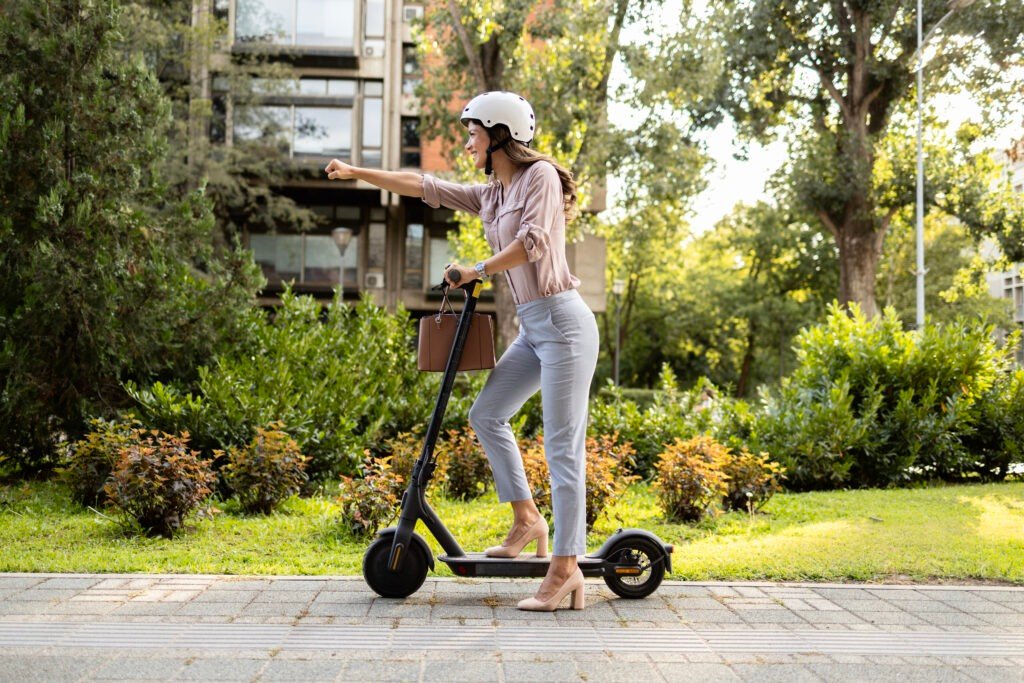
How Do Local Laws and Regulations Affect Your Choice?
It’s crucial to know your city or country’s stance on micromobility.
Registration Requirements for Motorized Vehicles
Many regions treat electric mopeds like motorbikes or 50cc gas mopeds, meaning they require registration, insurance, and sometimes a license. Scooters, especially those under a certain wattage or speed limit, often bypass these rules.
Where You Can Legally Ride: Road vs Bike Lane Access
Scooters can typically ride in bike lanes, which makes them more flexible in congested cities. Mopeds are often restricted to car lanes, limiting where they can go and affecting commute times in traffic.
Insurance and Safety Equipment Requirements
Electric mopeds may require insurance and legally mandated safety gear like helmets or even eye protection. Scooters are often exempt but wearing a helmet is always strongly recommended for both.
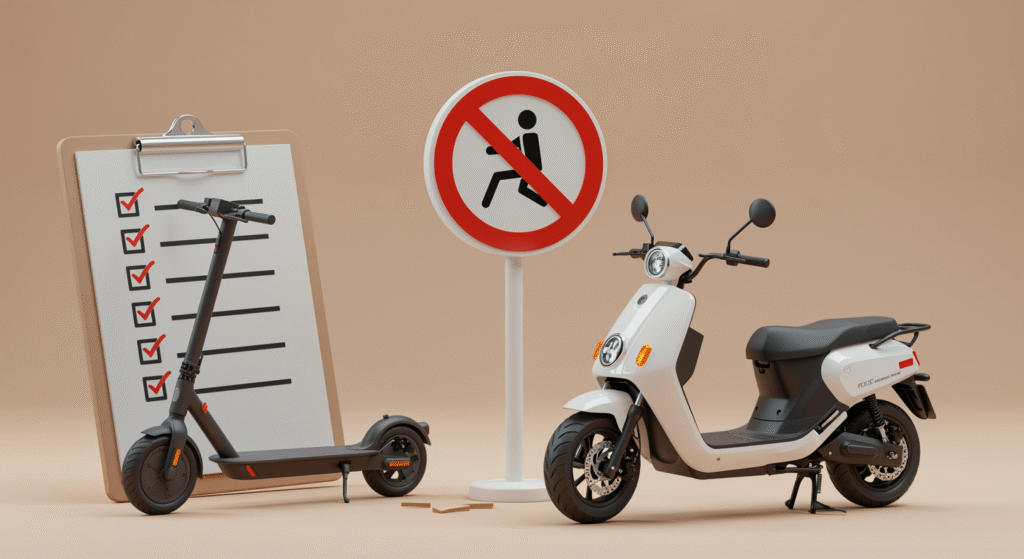
How to Choose Between Electric Mopeds and Electric Scooters for Your Needs?
Choosing the right ride depends on your personal habits, geography, and commuting style.
Assessing Your Typical Riding Distance and Terrain
If your daily ride is short, flat, and includes sidewalks or bike lanes, an electric scooter may be perfect. But if you travel longer distances, go uphill, or carry items, an electric moped might be the better fit.
Weather Considerations for Electric Rides
Electric mopeds generally handle bad weather better, thanks to enclosed wheels, stronger frames, and better lighting. Scooters, with smaller wheels and open decks, are more vulnerable to slippery roads or puddles.
Finding the Perfect Balance of Speed, Comfort, and Practicality
The decision ultimately comes down to your preferences:
- Do you prioritize speed and comfort? Choose a moped.
- Do you value portability and minimalism? Go with a scooter.
- If you’re still unsure, try test rides to compare comfort, maneuverability, and performance.
Conclusion
Both electric mopeds and scooters are fantastic eco-friendly alternatives to gas-powered vehicles, helping reduce emissions and traffic congestion. Whether you value the speed and power of mopeds or the agility and portability of scooters, there’s a two-wheeled vehicle powered by an electric motor that fits your commuting needs.
Whichever you choose, you’ll be joining the growing wave of e-bike, e-scooter, and EV riders reshaping urban mobility — one clean ride at a time.
Check out our Electric Mopeds section.
Explore California’s eligibility criteria for e-bike incentives.
Frequently Asked Questions:
No, electric mopeds and electric bikes are different. An electric bike (or e-bike) typically has pedals and assists your pedaling using an electric motor, while a moped usually operates with a throttle and doesn’t always include pedals. Mopeds are also faster and may require a license in some areas.
Yes, many riders use e-bikes as a more convenient alternative to a regular bicycle, especially for longer commutes or hilly terrain. You still pedal, but the motor helps reduce effort, making it easier to ride without breaking a sweat.
No, both electric scooters and e-bikes are fully electric and do not use gasoline. They are powered by rechargeable batteries, which makes them cleaner and more eco-friendly than traditional gasoline-powered vehicles.
Yes, most electric mopeds are designed to operate without pedaling. Unlike electric bikes, which require at least some pedal input in many cases, mopeds function more like small electric motorcycles.
